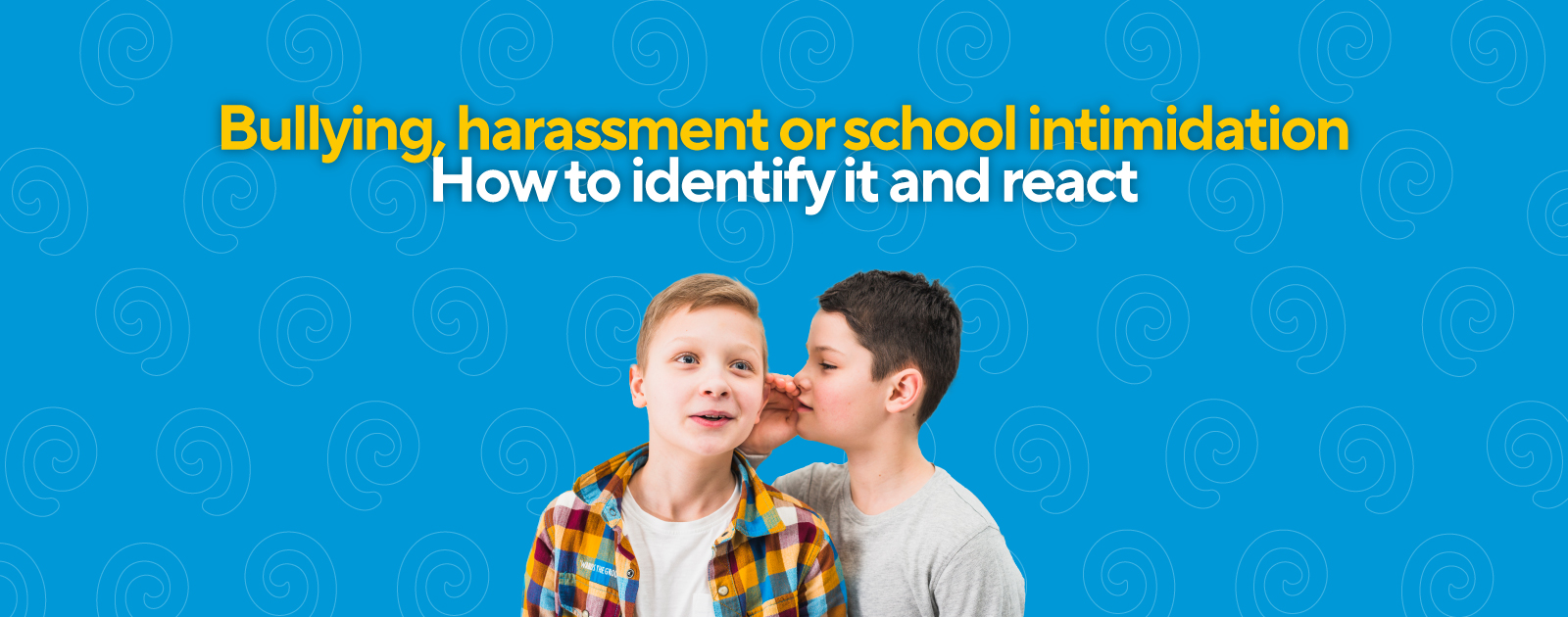How to know if it is bullying or a temporary fight between teenagers? Fortunately, school conflicts started to be categorized since a few years ago, and today we have more tools to handle situations for prevention and timely manner solutions for intimidating cases.
According to the Article#2 of the 1620th law of 2013, Bullying or school harassment is ‘any negative behavior, intentional, methodical and systematically aggressive , intimidation, humiliation, derision, defamation, coercion, deliberate isolation, threat or violence provoking or any type of psychological, verbal or physical harm or through any electronic means against a boy, girl, teenager caused by a student or several of their peers, who has an asymmetric power relation and that occurs in a reiterative way or along a determined period of time. There would be three actors involved in school harassment situations: the intimidated, the bully and the observers (witnesses that support the bully or prefer to remain silent to ‘not get involved’). With this clarification given, we will go through what can be done before (prevention), during (immediate response) and after (sustainable solution) the occurrence of a school harassment case.
Before:
Regardless of the role that our young people play, it is important to develop pro-social skills, especially related to empathy and assertiveness:
What is Empathy?
According to Martha Menendez (Child and adolescent Psychologist, 2018) empathy ¨is the ability to put yourself on the other’s place, to be aware of the other’s feelings and emotions¨ to be humane, to manage our own emotions. An empathic teenager can create healthy social bonds and would be a positive character in harassment situations, since certainly would not be intimidating, neither watching without taking action.
What is Assertiveness?
As the psychology master Claudia Prada says, is the ability to set boundaries, to say ¨no¨ to let other know of feelings, thoughts, emotions and ideas without hurting each other.
Why Empathy and Assertiveness?
Within the normal milestones of growth, teenagers need to belong, be accepted, show themselves with confidence and independence, build an identity and embrace the group’s pressure. These situations make them susceptible of school intimidation, and these two skills would not only allow them to face this phenomenon, but they would be skills for life.
If we are parents, it is important to check our parenting style, the family relationships, the quality of the emotional bonds, and the creation of spaces of discussion, listening and orientation (not judgmental). Check if they are enhancing or obstructing the acquisition of empathy and assertiveness, given that parents are still role models to teenagers.
In the presence of crisis situations, they can look for support, and as Icami Tiba says in her book: “Those who love educate” parents can promote that space where the teenager can make an ‘strategic stop’. To accomplish so, homes should give out clear life- giving messages towards teenagers.
The following list will present some home characteristics that foster growth and counteract the influence of foreign environments that could give out a message supporting wellbeing:
- A home that doesn’t discriminate
- A home that doesn’t make fun of others conditions or features
- A home where concerns are shared
- A home where feelings and emotions are validated but their expression is guided.
- A home where mistakes are not judged, but the opportunity to learn is reflected upon.
During:
Is important to pay attention and keep an eye on signs like:
Mood changes that go beyond those typical of the age phase. A differentiating aspect is the change intensity and the inability impact on daily activities. Is different to be sad and find it hard to do something, than to be so sad that you avoid doing it.
- Significant changes in social routines, going from having certain contacts or experiences to almost nothing.
- Recurring negativity towards going to school without any apparent reason.
- Increased or decreased time on the internet (using social media) compared to usual.
- Verbalizing phrases that indicate rage, frustration or fear regarding themselves or others.
In case of seeing these signs, is crucial to report to the school to activate support channels and protocols for intervention in a timely manner and conciliate solutions.
After:
Each case requires a particular approach, but is very important to stress to our teenagers forcefully that no one deserves living a situation like this, for which we can promote:
- Strengthen their self-esteem
- Provide security and accompaniment until needed
- Keep discussion channels open
- Remind them they are loved
It is not impossible to be an intimidation-free school space, but it requires a constant commitment from everyone as a house-school team. Our permanent and clearly common goal in between all our community members is for our kids to grow and develop in a safe, happy an comprehensive welfare space.
¡Lets build the world we imagine, together!
To know more we invite you to check the ´School intimidation and cyber bullying management kit´ from ‘Red Papaz’ and the book ‘Navega la tormenta’ (Sail the Storm) from our former CIEDI student and soon to be PhD in Developmental Psychology, Lina Saldarriaga.
Additionally, if you want to know more about our BIPRODEHU program ‘Bienestar, Promoción y Desarrollo Humano’ (Well-being, promotion and human development), or if you are interested in being part of our learning community.




